When it comes to comparing gnats vs fruit flies, you may be wondering what their differences are so that you can tell them apart. Both of these pests are commonly found in homes around the world, but these two bugs are very different once you understand how to tell them apart.
Given the fact that they live in very different habitats or environments, this may be one of the easiest ways for you to tell the differences between fruits flies vs gnats.
In this article, we will address some of the primary things that separate fruit flies vs gnats, as well as how you can tell them apart in detail. Not only will this article be helpful in terms of identifying a variety of pests, but you can also learn their behavior so that you can control them should you have a gnat or fruit fly problem.
Let’s get started!
Comparing Gnat vs Fruit Fly

| Gnats | Fruit Flies | |
|---|---|---|
| Species | Nematocera | Drosophilidae |
| Lifespan | 5-10 days | 7-18 days |
| Habitat | Often found in potting soil or other organic materials | Found near rotting food or unclean areas, such as kitchen drains or trash cans |
| Size | 1/8th-1/4th of an inch | 1/8th of an inch |
| Appearance | Dark or black in color; long legs and body with weak flight pattern | Tan, gray, or black in color; shaped like a traditional fly with large red eyes |
The Main Differences Between Gnat vs Fruit Fly
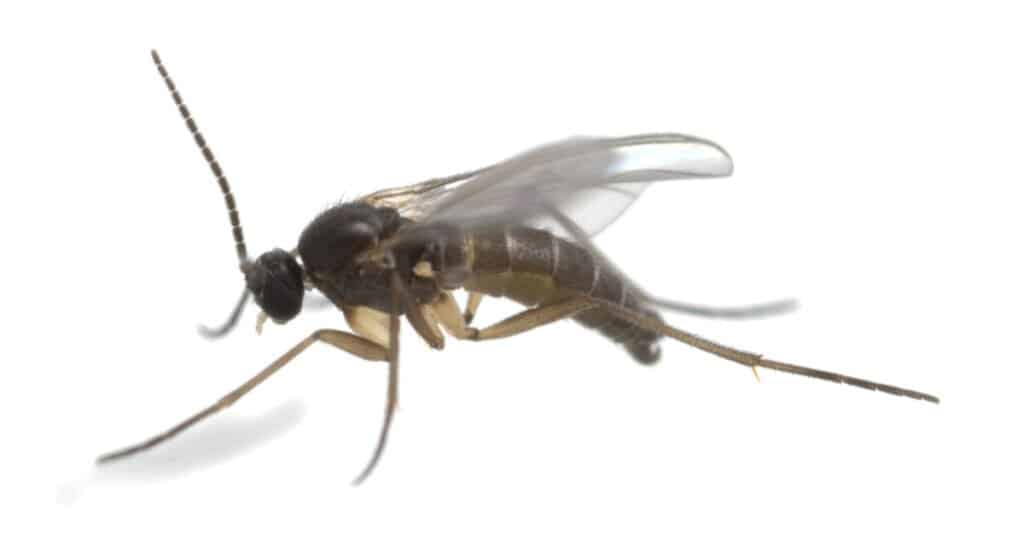
Gnats belong to the
Nematocerafamily, while fruit flies belong to the
Drosophilidaefamily.
©Henrik Larsson/Shutterstock.com
There are many key differences between gnats vs fruit flies. For example, gnats belong to the Nematocera family, while fruit flies belong to the Drosophilidae family. Fruit flies are different in appearance from gnats, often lighter in color with red eyes visible. Finally, gnats and fruit flies have different habitats and locations that they prefer to be part of. Gnats prefer to live around soil and organic materials while fruit flies are often found near rotting or unclean areas.
Let’s go over some of these differences in more detail now.
Gnat vs Fruit Fly: Species Classification
One of the main differences between gnats and fruit flies lies in their species classification. Gnats are from the Nematocera family, while fruit flies are from the Drosophilidae family. While this difference may not necessarily help you tell these two insects apart, it is a key difference between them. No matter how similarly these bugs look upon first glance, they are not related.
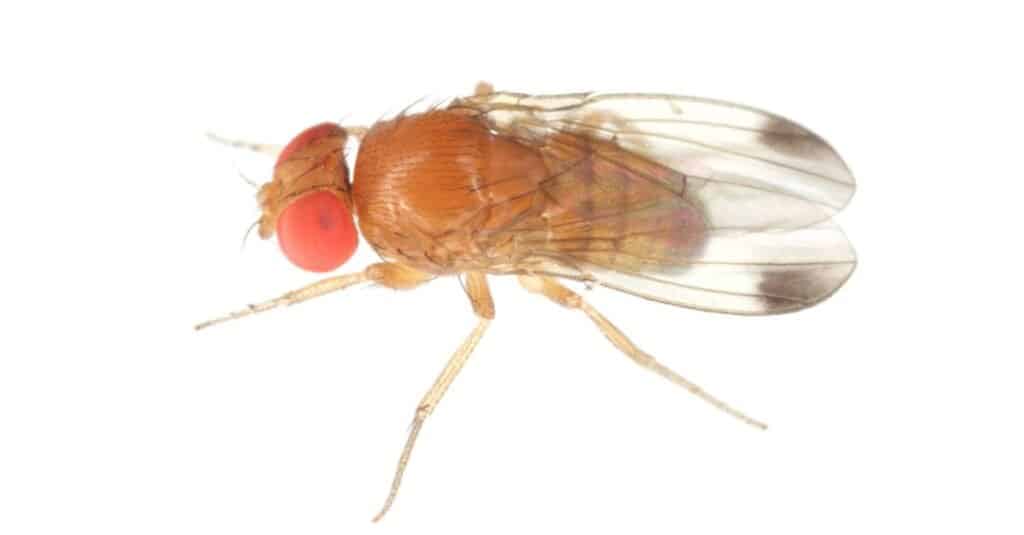
Gnats differ from fruit flies in that they do not have visible eyes, like fruit flies do.
©iStock.com/Tomasz Klejdysz
Fruit Flies vs Gnats: Appearance
A key difference when it comes to gnats vs fruit flies is found in their appearance. Even though both of these bugs are roughly 1/4 of an inch in length, they look very different, even to the naked eye. Gnats are usually dark gray or black in color, while fruit flies range in color from tan to black. But there are more differences in their overall appearance than this.
Given their species classifications, gnats and fruit flies look like their fellow insect species found under the same family name. For example, gnats belong to the same family as mosquitoes, and their body illustrates this. They have long dangling legs and thin wings, often flying in a similar pattern to a mosquito.
Fruit flies are classified in the same family as the standard house fly, and have a body that resembles this, making them very different from gnats. Gnats also differ from fruit flies in that they do not have visible eyes, like fruit flies do. You will know a fruit fly by its trademark large red eyes, very similar to other species of fly.
Fruit Flies vs Gnats: Habitat
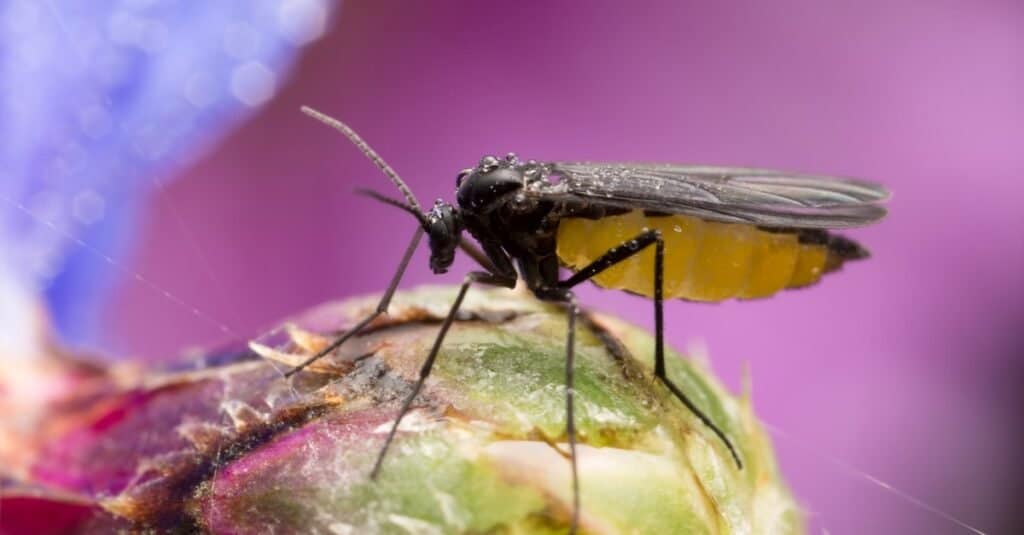
Fruit flies can be found near particularly smelly areas of your home, such as trash cans and drains, while gnats prefer to hover around areas of organic matter, such as plants and soil.
©Henrik Larsson/Shutterstock.com
Another difference between gnats and fruit flies is their preferred habitat and surroundings. Fruit flies can be found near particularly smelly areas of your home, such as trash cans and drains, while gnats prefer to hover around areas of organic matter, such as plants and soil.
This is an important distinction to make, as their habitats often determine whether or not you will have an infestation of gnats or fruit flies. For example, if you notice that your favorite house plant is being swarmed by gnats, you may need to take some time and care for its soil to prevent further gnats from being born. The same goes for fruit flies, as you may be experiencing difficulties with rotten garbage or compost. The last thing you want to do is encourage fruit flies or gnats to stick around your home!
While gnats feed on organic plant material, fruit flies are a little more creative in their preferred diet and habitat. Fruit flies will seek out any type of rotting food, including unattractive slime found in your garbage can or sink drain. Gnats tend to stick close to plants, and fruit flies hover near your rotting produce!
Fruit Flies vs Gnats: Lifespan
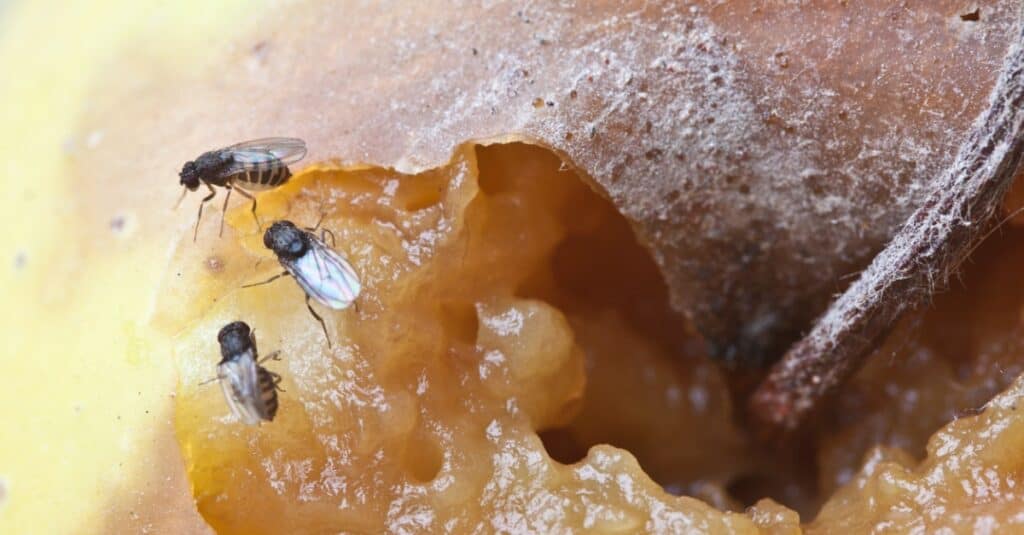
Gnats live an average of 5 to 10 days, while fruit flies live at least a week, if not closer to 20 days.
©iStock.com/hoja_viva
A final difference between these two insects lies in their life span. Gnats live an average of 5 to 10 days, while fruit flies live at least a week, if not closer to 20 days. You will likely want to know how long you can expect these insects to live if they are flying around your home, as very few people enjoy the presence of a gnat or fruit fly.
Thankfully, neither of these insects live very long in the grand scheme of things. However, this short amount of time is enough for them to breed and create more of their own kind, so dealing with an infestation sooner rather than later is always a good idea.
Bonus: How to Get Rid of Gnats in Your Plants
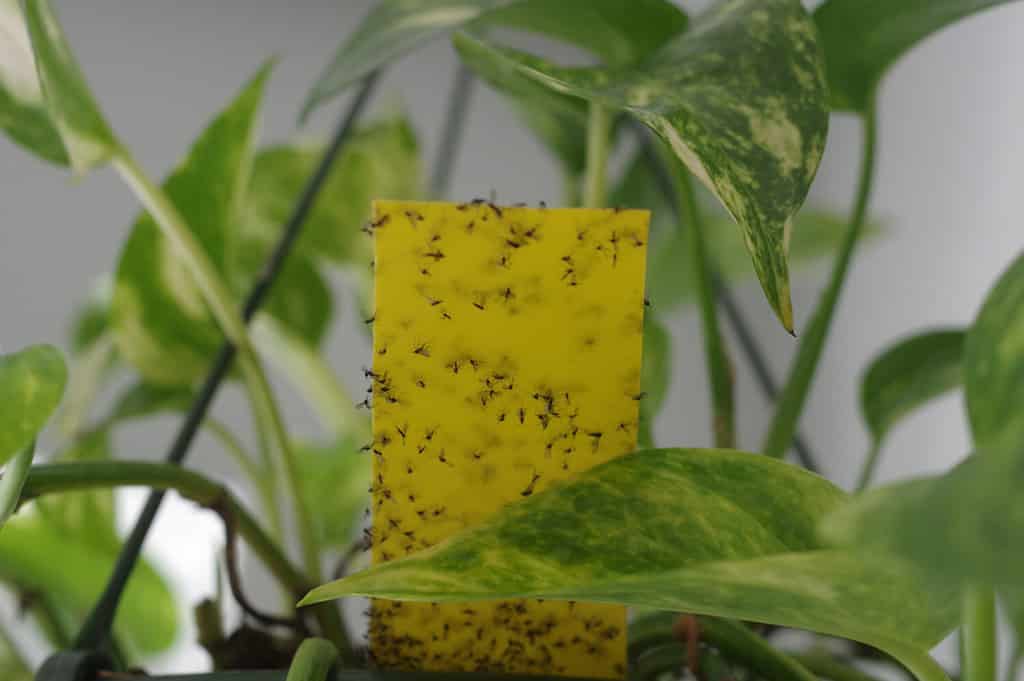
Sticky yellow sheets are an effective way to rid your plants of gnats.
©Pixelbender36/Shutterstock.com
Getting rid of bugs in your home is often difficult – but getting rid of gnats in your plants is relatively easy! Here are some suggestions:
- Don’t overwater your plants. Gnats thrive in wet environments – so test your plants before you water to make sure they need it.
- Provide adequate drainage for your plants. If your plants aren’t draining properly – gnats can lay eggs that can disperse all through the soil – making things worse.
- Use traps to capture gnats. Sticky gnat traps like the one illustrated above work like magic! You can also mix several drops of dish soap with a cup full of white vinegar in a bowl, and place it near your plants. Gnats can’t resist!
- Repot your plant. This is a last resort.
The photo featured at the top of this post is © Henrik Larsson/Shutterstock.com
Thank you for reading! Have some feedback for us? Contact the AZ Animals editorial team.






